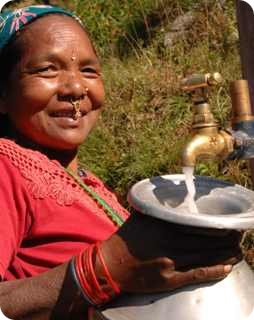To start off this post, let me share with you some interesting facts about water :
- Roughly 70 percent of an adult’s body is made up of water
- A healthy person can drink about three gallons (48 cups) of water per day
- Drinking too much water too quickly can lead to water intoxication. Water intoxication occurs when water dilutes the sodium level in the bloodstream and causes an imbalance of water in the brain.
- Somewhere between 70 and 75 percent of the earth’s surface is covered with water.
- The earth is a closed system, similar to a terrarium, meaning that it rarely loses or gains extra matter. The same water that existed on the earth millions of years ago is still present today.
- The total amount of water on the earth is about 326 million cubic miles of water.
- Of all the water on the earth, humans can used only about three tenths of a percent of this water. Such usable water is found in groundwater aquifers, rivers, and freshwater lakes.
- The United States uses about 346,000 million gallons of fresh water every day
- The average person in the United States uses anywhere from 80-100 gallons of water per day. Flushing the toilet actually takes up the largest amount of this water.
- Approximately 85 percent of U.S. residents receive their water from public water facilities. The remaining 15 percent supply their own water from private wells or other sources.
- By the time a person feels thirsty, his or her body has lost over 1 percent of its total water amount.
source : http://www.allaboutwater.org/water-facts.html
While the above are interesting facts, the following are some saddening facts :
- Roughly 12 percent of the world's population, or 884 million people, do not have access to safe water
- About 2.5 billion people in the world do not have access to adequate sanitation – roughly two-fifths of the world's population
- Approximately 1.8 million children die each year as a result of diseases caused by unclean water and poor sanitation. This is around 5,000 deaths a day
- Diarrheal diseases can be reduced by more than 40 percent through the simple practice of washing hands with soap and water
- Water-related diseases are the second biggest killer of children worldwide. Number one is acute respiratory infections, such as tuberculosis
- Nearly 90 percent of water-related diseases are due to unsafe water, sanitation and hygiene; and most victims are children in developing countries.
- The average person in the developing world uses a little more than 2.5 gallons of water each day for drinking, washing and cooking. Whereas the average person in the developed world uses 13 gallons per day only for toilet flushing
- Worldwide, approximately 425 million children under 18 do not have safe water.
source : http://www.compassion.com/poverty/water.htm
Water is something that became more like a passive need for all of us. We take it for granted since we know that whenever we turn the faucet, something will come out of it. But little do we know that millions of people around the world has less access to it, and for some have really no supply of it.
Vision
WaterAid's vision is of a world where everyone has access to safe water and sanitation. Now it is easier to fetch water and go to the toilet. Our hygiene has improved and there isn’t diarrhea and dysentery like before. Moti Kumari, Nepal
Mission
WaterAid transforms lives by improving access to safe water, hygiene and sanitation in the world's poorest communities. We work with partners and influence decision-makers to maximize our impact.
Moti Kumari at a WaterAid-funded tapstand in Tangmang, Nepal.
Credit: WaterAid / Marco Betti
WaterAid enables the world's poorest people to gain access to safe water and sanitation. Together with improved hygiene, these basic human rights underpin health, education and livelihoods, forming the first essential step in overcoming poverty.
We are committed to addressing the vital need for safe water, improved hygiene and sanitation head on. We aim to increase our impact both directly on the ground through our partner organizations, and indirectly by influencing others and promoting best practice in the field and in our offices.
WaterAid helps poor communities in Africa, Asia, the Pacific region and Central America gain access to safe water, sanitation and hygiene education, and work to influence policy.
Follow WaterAid on :
Youtube : http://www.youtube.com/user/WaterAidAmerica
Facebook : https://www.facebook.com/WaterAidAmerica
Twitter : https://twitter.com/WaterAidAmerica
This is a post for Global Team of 200, a highly specialized group of members of Mom Bloggers for Social Good that concentrates on issues involving women and girls, children, world hunger and maternal health.


